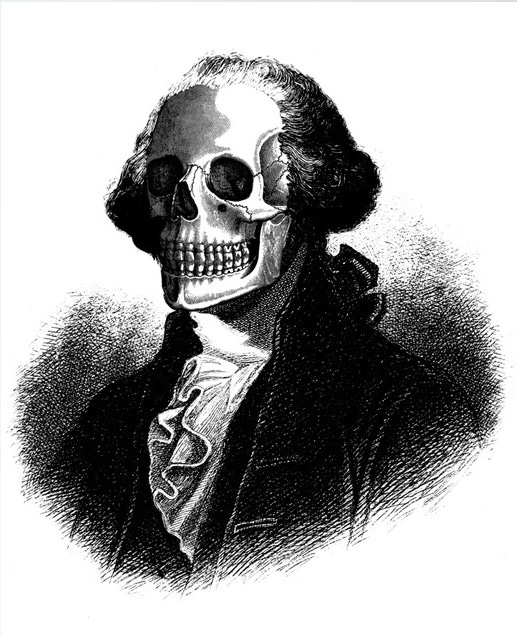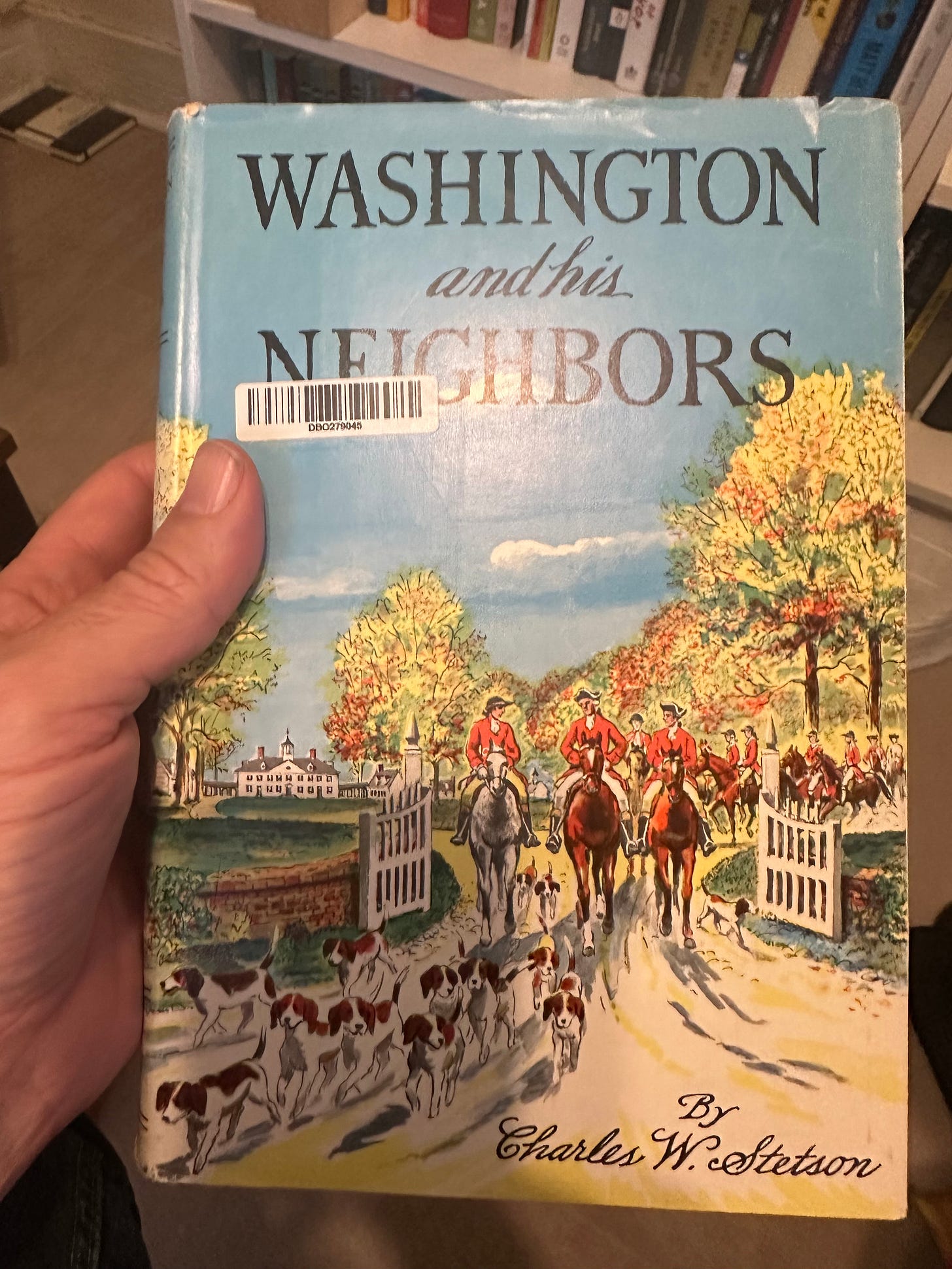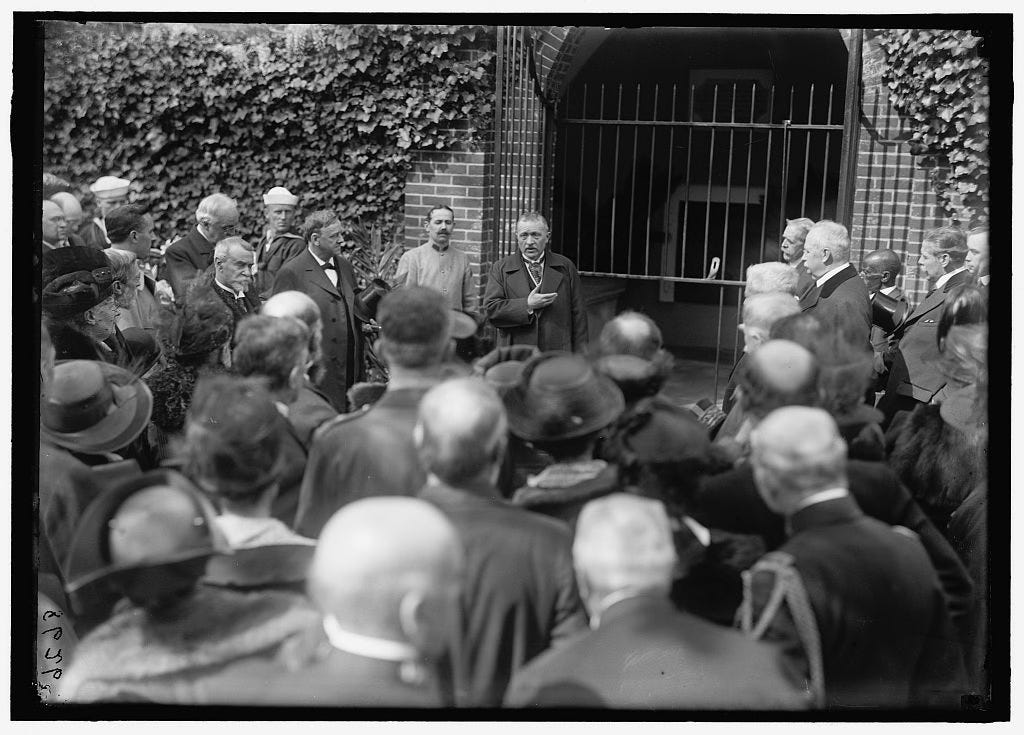The mysterious case of the story of the attempted theft of George Washington’s skull
Adventures in tracing citations
In the basement of the Capitol Building in Washington D.C., there is an empty tomb that was intended for the body of George Washington.1 I learned this, as I am wont to learn odd trivia thanks to wandering down Wikipedia rabbit holes, and learning about the Capitol crypt led to my reading about the attempted theft of George Washington‘s skull from the family crypt in Mount Vernon, an article which seems pretty reliable, after all, it has citations and links to congressional resolutions. Just some of that history they don’t teach you in school.
.And yet, somehow, I was not satisfied with the article. I clicked on one of the footnotes that talked about the renewed calls to transfer Washington’s body to the Capitol after the attempted theft of the skull and found that, rather than pointing to an act by Congress after that event, it instead was a page about the original resolution, passed by Congress shortly after Washington‘s death.2
Well, that wasn’t the supporting evidence I hoped for.
But there were other footnotes. One, referred to a book entitled, Stealing Lincoln’s Body published in 2008 by Harvard University Press. That should be reliable, no? There’s even a footnote on the claim, which cites a book entitled Washington and His Neighbors by Charles W. Stetson. Stealing Lincoln’s Body was on Google Books and I could read the appropriate passage and find the footnote online, but no such luck with the Stetson book. So I tracked down a copy and bought it.
And I eagerly turned to the cited page of the book to find—
nothing about the alleged attempted theft of Washington’s skull.
Had I uncovered an elaborate hoax? The other citations about the attempted theft were to the “Papers of Harrison H. Dodge, Collection of Mt Vernon Library.” This was going to be a harder source to track down. I’m committed enough to the bit to spend six bucks on a book, but not enough to make a trip to Virginia to do primary source research at Mt Vernon.
But who is this Harrison H. Dodge, anyway? The internet was kind enough to inform me that “Harrison Dodge is the longest serving superintendent (or equivalent) of George Washington’s Mount Vernon. He was appointed in 1885, when he was in his late twenties, and remained in the position for 52 years.” His tenure began over 50 years after the alleged attempt at stealing the skull took place and, in fact, Dodge was born 22 years after the claimed theft. On the other hand, the papers have dated items going back to 1816 and some undated items that might have been created in the 1770s.
Finally, I managed to find, at least, a quotation of what Dodge said, in an article in the Washington Times:
His name I have never learned, nor do I know what was his nationality,” Dodge wrote. “Under cover of night he returned and forced the door of the old family-vault, taking from one of the coffins a skull which he supposed was that of General Washington but which proved to be that of one of the Blackburnes a relative of Judge Bushrod Washington’s wife. The man was apprehended the next day in Alexandria and the skull was returned to its place.
But this was written in 1905 and is not much more than hearsay. And also in the article, we learn,
Mr. Costello, author of “The Property of the Nation,” a book about Washington’s tomb, discredits the 1824 account. He wrote that the papers at the time said the thief made off with Lund Washington, who wasn’t actually entombed there.
Matthew R. Costello’s3 book, Property of the Nation, sounded like it might have some more information. Finally, a clue. Of course, none of the local libraries have a copy, but I’m still committed to the bit:
Here, I found an account given that was more contemporaneously sourced (an 1832 account in the Portland Evening Advertiser):
The writer assumed that “Fisher” had planned to flee the country “with his prey” and make some sort of “speculation with it.” Fisher, however, did not succeed because the coffin was too secure. Instead, he took the skulls of a male relative and a female child.
In a footnote, Costello also says that the attempted theft is also recorded in Mount Vernon records (although a more specific citation is not offered), so apparently there may well have been an attempt made, but confusingly, there seem to be contemporaneous accounts of theft attempts not just in 1832, but 1824, 1829 and 1830, all of which share bits and pieces of details which left me wondering whether any of these actually happened or if it was continued retellings of the same urban legend. And so, I leave it with the unsatisfying conclusion that maybe it happened, but if it did, who knows what the actual facts of the attempt were.
Publications, recent and otherwise
It’s been a while since I’ve sent out an email so I’ve got a bit of a backlog of publications in the intervening time. Everything is in print so you’ll have to dig out your wallets to get your copies if you want them. I have two poems in the Spring 2024 issue of Exacting Clam, and an excerpt from my novel in progress, We the Rescued, was published in the Spring 2024 issue of Nebo which is available for $5 from the publisher. More is coming later this year, and perhaps I’ll be keeping up more with interesting things here as well.
Recommendations
A bit of a two-parter here. First, if you haven’t seen the latest season of Doctor Who with Ncuti Gatwa as the Doctor, you should definitely watch it, especially the episode, “Dot and Bubble” which seems like it’s just a satire on social media, but turns into something so much more than that by the end of the episode (it shocked me how many reviewers missed the actual point of the episode).
Then, after you’ve seen it, and presumably gotten what it’s about, watch this video review of the episode,4 which, yes, absolutely gets it, but goes beyond it into making a point about the Doctor’s reaction at the end of the episode that will push you into thinking more about how you think about the whole world.
In the alternate timeline where Washington’s heirs agreed to his interment in the Capitol basement, I can see this leading to a world in which all dead presidents ended up buried there which would have led to all manner of fascinating disputes, e.g., how would the burial of a disgraced ex-president like Nixon have been handled?
Having spent the last seven years in research on a historical novel, I’ve become a bit of a fanatic about following the footnotes.
Random aside, but I had always assumed that Costello was an Italian name until I saw it appear among the Irish characters of Mary Gordon’s The Other Side and I discovered it is, in fact an Irish name (although the similar-sounding Castello is Italian).
I suppose, if for some twisted reason, you’re unwilling to do a month of Disney+ for the sake of the new Doctor Who, you can just watch the video review.






